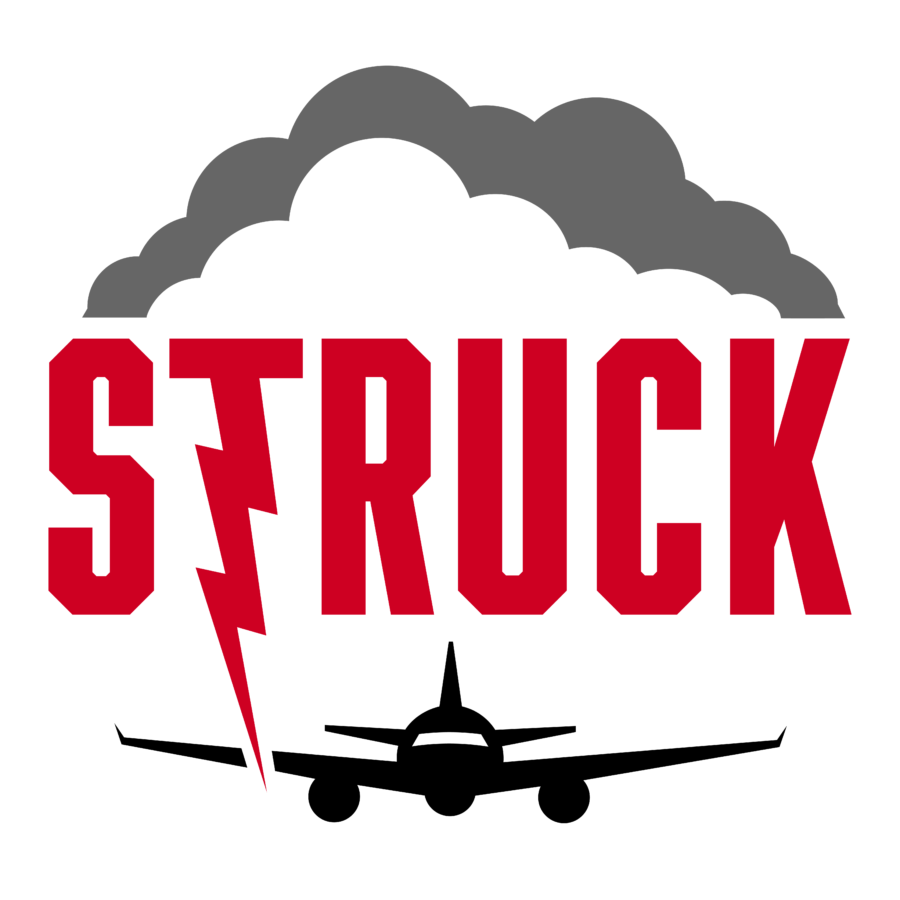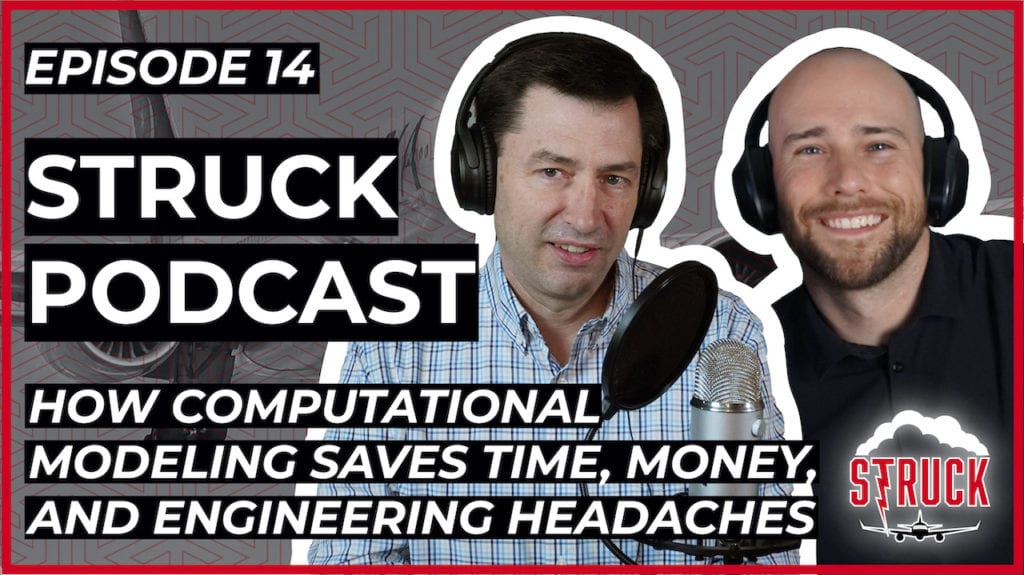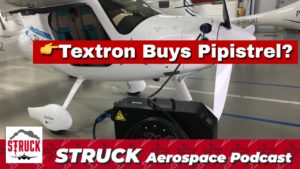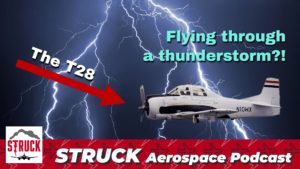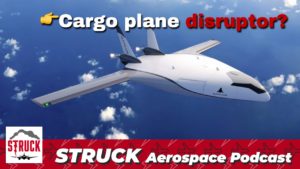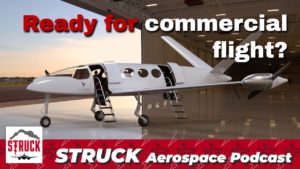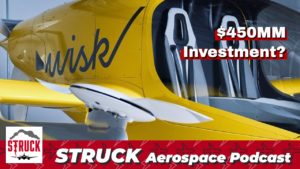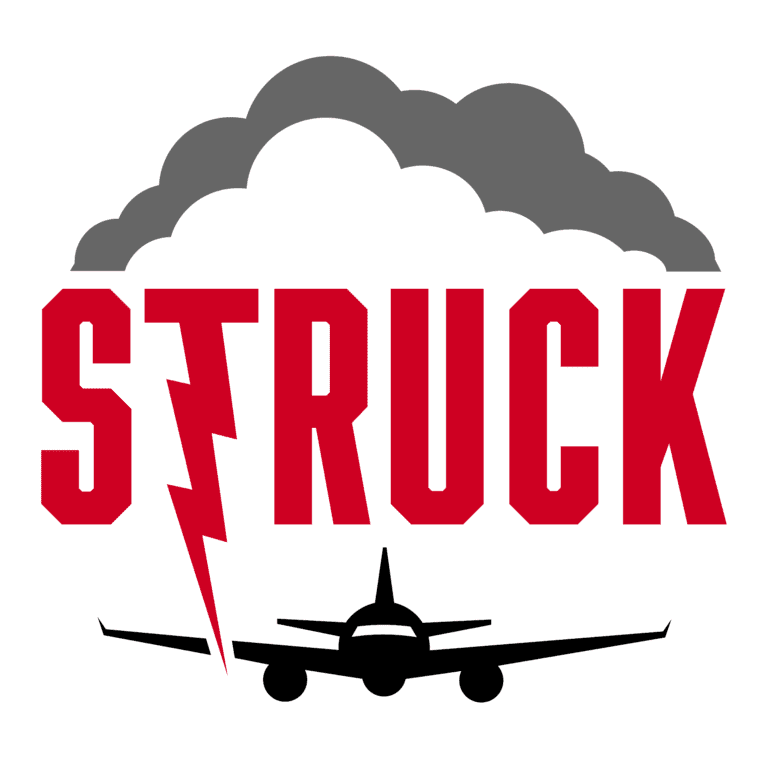Dr. Ana Vukovic from the University of Nottingham’s George Green Institute for Electromagnetics Research joined us to talk about her incredible computational modeling work. She shared examples of how their computer modeling technology can greatly reduce the time and expense involved in testing the electromagnetic properties of new parts, including lightning protection, HIRF and RF designs.
Her team at the University of Nottingham, including Dr. Trevor Benson and Dr. Phil Sewell, are doing amazing things to improve efficiency of parts engineering in the aerospace industry, among others. What previously might take weeks and months to develop and test can now be tested in as a little as a day using their unique computational modeling techniques.
Contact Dr. Vukovic via email or visit the George Green Institute page at the University of Nottingham.
Watch the video version of this podcast on YouTube.
Learn more about Weather Guard StrikeTape segmented lightning diverter strips. Follow the show on YouTube, Twitter, Linkedin and visit us on the web. Have a question we can answer on the show? Email us!
Podcast: Play in new window | Download
Struck Podcast EP14: Dr. Ana Vukovic from the University of Nottingham on Computer Modeling
Here on Struck, we talk about everything aviation, aerospace engineering and lightning protection.
Alright, Allen, we got a guest today from across the pond. So who are we talking to today?
Allen Hall: It’s Ana Vukovic with the University of Nottingham. She is in computation modeling. And they have developed some really interesting software and technology over the last couple of years so that we can now.
Really simulate aircraft, uh, installations, even on wind turbines, we can do some of the complex geometries we couldn’t do before, because we didn’t have the techniques. So on I and our group over there have developed these techniques and, uh, [00:01:00] surely gonna open a whole number of doors in aerospace. And obviously is we’re all coming out of COVID.
Uh, one of the things that’s really trying to save costs and move programs forward. Well, this is one way to do it.
Dan: Yeah. So it was interesting conversation. Obviously I’m not an engineer, so me being the outsider, it, it still boils down and it makes a lot of sense. So obviously when you’re trying to engineer new parts for an aircraft, it’s incredibly expensive, takes incredibly expensive people to do so it takes a lot of time.
And when you’re ready to test these systems together, so not just like an antenna, but the whole radon with antenna inside and diverter strips on the outside of this whole complex thing currently, you guys have to actually build it. And then in most of this is actually put on the plane just to test it, to maybe see if, if there’s an effect at all, or if there’s like an incremental effect, which seems like a terrible waste of time and money.
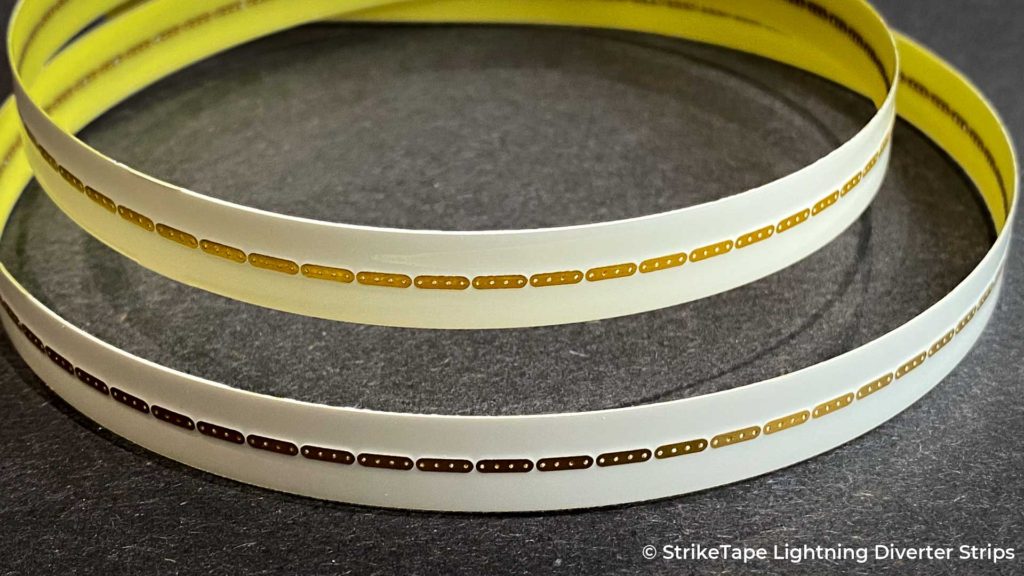
And so it is it’s can do this on a computer modeling or on computer modeling. Yeah. And just be done with it, which [00:02:00] sounds like, I mean, just makes a ton of sense.
Allen Hall: It makes a lot more sense. You’re going to get better products at the end of the day and less expensive products, uh, in the computational world.
We’ve been trying to get here for since the 1970s, mid 1970s. So it’s been a long haul and obviously the computational power we have now. Helps because we doing a lot of computations, but a lot of this is trying to cut down the computations. And then the techniques that have been developed at the university of Nottingham reduce the amount of computational time it takes to do some of these complex problems.
So not only do we have the horsepower now, but we’re also smarter about the way we use the horsepower, which cuts down on cost.
Dan: And so she, they have more capabilities then. So in the industry, COMSOL is the software that. You can have a computer at your desktop, you know, work for a company and do some of this modeling on smaller scale individual parts.
And you can have someone in your company to do that. But if you really have [00:03:00] complex parts where you’re not just testing an antenna in isolation, you’re testing the whole radar and this whole system together. That pretty much goes beyond the capabilities of this otherwise very effective and, you know, popular COMSOL software.
Is that right?
Allen Hall: Yeah. COMSOL is a very useful tool and a lot of industry uses it. Now the wind turbine industry uses it a lot for lightening protection thing. So the aircraft industry uses it a lot for, uh, lightning and, uh, Electromagnetic compatibility issues. Uh, the, the issue really gets down to is to try to accurately simulate complex shapes and on larger.
Aircraft or larger art objects. It doesn’t matter what it is. It could be a ship on the sea. Those are huge complex objects, uh, with a lot of fine detail in them that that matters. And so in order to simulate that accurately, either you have to get decrease your resolution, or you got to increase your horsepower and computing power to actually mimic that and to mock it [00:04:00] up computationally.
Well, The way that Nottingham does it, it’s using the best of both worlds. It’s, uh, using sort of simpler techniques where they can, but, and the fine details are still there in the model, which is really hard to conceptually think about, but those little fine details as we get. And tonnages and we start working at higher and higher and higher frequencies.
Computationally becomes more and more computationally intensive. So this the higher, the frequency of the smaller, the details have to be it’s just gets to be this sort of, uh, uh, it just starts to wrap up into the shoes ball of goo of. Computational problems. They’ve gotten rid of a lot of that.
Dan: Yeah. It reminds me of the way she was describing.
It reminds me of video compression. So like, for example, if you’re watching us right now, most of my frame is not changing. Right? My camera’s recording at 30 frames per second, but most frames, all this peripheral information is constant. So in video compression, It’s not recapturing [00:05:00] those pixels. It’s reusing them from frame to frame when they don’t change.
And so that’s sort of, it’s not certainly not a perfect analogy, but it sounds sort of like that’s what her. There it is hybrid. Meshing is where they use cubes, where they can cause they’re easier. And they use the tetrahedral where they can’t, which is harder, same thing. Like the camera’s compressing this video when I move around and it’s not when, when I’m not.
So it just makes it a lot simpler and reduces the, reduces the amount of frames and file sizes, or maybe not amount of frames, but the file size in general. So,
Allen Hall: right. So even as we get, as the pictures get more and more detailed in the video sense. They actually get smaller and smaller files, relatively speaking.
The same things happen in electromagnetics and computational electromagnetics. We’re getting smarter about the way we do it. So the computers get much smaller and the amount of time it takes us a lot less. And yet the resolution has gone way, way up. It’s incredible. It really is.
Dan: Yeah. So without further ado, we’re going to jump into our pretty awesome conversation with Ana Vukovich
[00:06:00] So on a, uh, one of the major difficulties, uh, you know, in testing RF and, uh, an EMI. Or I guess, creating new parts just for that purpose, right. There’s a really big expense in having to create a radar, just to throw it on an airplane to then test it. So, uh, with some of your computer modeling, how are you tackling that problem?
Dr. Ana Vukovic: Geometry creation is the first step in doing electromagnetic simulation. Um, we have different options for geometry. Creation. We can either read in clean cut files or we can create our own job with refile. Now cut files up historically made for mechanical engineers and they, uh, have tiny microscopic gaps between surfaces, but they’re not an issue for mechanical engineer.
But for my other simulations, tiny gaps can pick up as traffic. They can, they stop the field, uh, [00:07:00] and, uh, and give us an accurate simulation. So, uh, it is very important to, um, get rid of this, um, small gaps. So we call this cat dirty cat. And the process of eliminating apps is cleaning the cat. So, um, Oh, all software can read, uh, different, uh, CAD files, such as IGS, for example.
Um, but does not do repair so we can locate the errors, but regarding the repair, we can alternatively. Send the customer report. Oh, we can generate our own in house geometry.
Dan: Gotcha. So, yeah, I mean, you guys have some pretty incredible capabilities. Um, but I’d like to back up a little bit. So, you know, when we’re talking about, again, like testing some of these, these expensive to create models, like, all right, we’re trying to design something new for an aircraft or new for a wind turbine or whatever the part might be.
Um, what are, what’s the, I mean, and now feel free to jump in here as well. I mean, how, how does this [00:08:00] process go in the engineering world? I mean, we go from concept like, Hey, here’s an idea that we have that we think might work. Um, then what is it typically? Is it typically a physical part or, cause I know Ana that’s where you come in, where you can say, we don’t need to do this physically.
We can just do this on our computer simulation and save you a whole lot of time and trouble. Is that Alan, is that kind of the process with aerospace engineering at least?
Allen Hall: Yeah. Yeah. So a lot of aerospace engineering, particularly in electromagnetics is trial and error and, and enlightening protection. It really is trial and error.
So there’s a lot of work done and parts built just to try out ideas that. We can’t or couldn’t do two recently computationally. So we ended up spending a bunch of money and time. Coming up with concepts that we then shipped to some laboratory somewhere in the world to spend tens of thousands of dollars to do a test that lasts less than a second.
So he can, so this is like a six month process between [00:09:00] idea and test. And that’s a very expensive loop for these aerospace companies, because you just are delaying the. The outcome of trying to get an airplane or a wind turbine or anything else out into production. And that’s where there’s some of these new computational tools really come in is that we just shorten that cycle time down and lessen the burden of costs so that we can be more efficient.
And that’s where Ana’s computational technology really comes into play.
Dan: So on a, you can basically save these companies from creating a physical model and you can do this. In house, in your, in your computer simulation?
Dr. Ana Vukovic: Yes. So asset base industries, a typical example of large scale electromagnetic problems.
And this is the angle we are sort of looking into, um, Designing individual components. It’s all right. And it’s usually done using computational softwares. However, if you have a large scale problem [00:10:00] and which is difficult to represent in electromagnetic way, in terms of geometry simulation, meshing, then you tend to do more experiments than.
Simulations, however, you could have the capability to do electromagnetic simulations on large scale problems that has potential to reduce the cost significantly because it can use that sort of a number of trial and errors, and it can enable you to do parameter sweep for optimization and looking into let’s say how field, how currents behave.
And so. Traditional modeling does it does not eliminate experimental set up in laboratory bucket can reduce the cost. And also it’s how much it reduces the cost. It depends on the company on the internal processes and our model.
Dan: Gotcha. So if I’m hearing you correctly, basically you can save companies just a lot, a lot of that trial and error, not completely eliminated, but instead of having to make X amount of real parts [00:11:00] and really fit them and then test them.
You can just really shorten that cycle, running them through your models and give them maybe a better idea of where they like, Hey, this, this idea seems like it’s viable. Whereas these other two prototypes, maybe not. So maybe put your, you know, if you’re going to build a real part, maybe go with this one here.
Does that sort of,
Dr. Ana Vukovic: yes. And for example, I’ll give you an example. Um, a customer had a wink damaged in lightening, um, and. They obviously looked into repair and they use the software to help them analyze current distribution on the wing. What they got is something was something that really they didn’t expect, but it helped them consequently to repair the wing.
So they managed to save a whole wing. So instead of making a new one, so potentially the saving is huge saving can be huge.
Dan: And so with that, Wayne, what did you, what was your process like? So they said, Hey, Ana, we have this problem. Um, what was that back and forth like?
Dr. Ana Vukovic: So it is just [00:12:00] sort of enabling them to read.
So if you, if you imagine, um, a wing airplane wing is made up of many thin layers of carbon fiber compensate, uh, so we enabled them to read into all these thin layers. Um, and you have potentially very large structure. So you have thin layer on a huge structure. So, um, the capability of the state layer modeling enabled them to look into, um, the current distribution and then hence, um, uh, how to repair, what sort of patch to put to repair.
Dan: Gotcha. And so this comes back to like your modeling. So in that situation, do they have to submit a, like a CAD drawing to you of their wing and include the damage or, or what do they need to do to get the right, um, you know, the right design drawing into your model to make it work?
Dr. Ana Vukovic: So I think that in that, uh, example, they had their own car design, but they didn’t have the capability of simulating these [00:13:00] multiple feed layers.
Um, so it is in a sense, a complex structure because it has many thin layers of different properties on a large scale. Uh, so, uh, that comes into sort of complexity reduction of the model. How do we deal? Uh, with that sort of complexity, how do we deal with large scale features and small scale pages in, in one, in one model that problem, uh, such huge problem.
Allen Hall: Yeah, because on these newer aerospace vehicles, particularly the ones that are made out of carbon fiber, the electrical complexities are immense. Because if you think about it, you got a wing scan, you have spars, you have ribs, you have reinforcements a lot of times, they’re not. Sometimes they’re glued together.
Sometimes there’s faster as holding them together. So electrically it’s really complex. System where currents will flow, not necessarily where intuitive you’d think they would flow, uh, because of joint resistances and things like that play into current [00:14:00] flow. So if you’re looking at a mechanically, looking at a wing, it’s pretty easy to understand.
You can see where the loads are going. You can see how the composite parts of design, but electrically it’s a complete different animal. You can’t really visualize it like you can on a, on a metal wing. Uh, cause we’ve just had so much data on it on these carbon fiber wings and because the complexities are put into each of the parts and because the geometries are so unique, it’s very hard to predict where currents are going.
Yeah.
Dan: So Alan w what is all kind of goes back to you? What’s the typical timeframe on something like this? Like, you’re designing a new part. Obviously the faster you can move, especially with big companies where there is a lot of meetings and lots of bureaucracy and lots of checks, you know, obviously for, for safety reasons and all that stuff, but.
What’s the typical timeframe. And what is the potential cost savings look like as a company? If it’s X amount of weeks, what would you guys love to like get it down to,
Allen Hall: well, I’ll give you, I’ll give you two good examples of let’s just talk about carbon fiber wings for a minute. I’ll [00:15:00] actually give you three good examples of how carbon fiber wings have really held up.
Aircraft programs. So first is hilarity five, which was a Learjet Bombardi, a project, uh, that eventually got canceled. Cause it just ran out of time and money because the co making a carbon fiber wing one structurally is difficult, but to electric is extremely difficult, particularly for lightening because everything wants to spark.
And so you end up doing, you ended up. Making test samples and hundreds of test samples. You’re doing all these tests, some work, some don’t, uh, the MRJ or the space jet Mitsubishi, which they just, uh, mothballed recently had that same sort of issue. And then the two 20, which did get certified, which was originally the Bombardi CSeries analysis, Airbus 80 to 20 has a carbon fiber wing.
And they did all kinds of computational things to shorten the cycle time. And you can’t. And the Airbus in the Bombardi C series was living off of some of the Learjet 85 testing that we had done. But you [00:16:00] have to compress the schedules because right now, too, from a clean sheet design to certification on a new airplane is somewhere between five 10.
Some of these are planes are 15, 13, 14, 15 years long. You can’t do that. Anymore, you just don’t have the wherewithal to do that. You have to, in part of that is driven by the lightening protection and electromagnetics, uh, particularly on, on military aircraft. You can’t do that anymore. You can’t, you can’t keep spending billions of dollars on these things.
You have to shorten the cycle time so we can get products out. So the reason why we’re not talking about computational electro genetics today is because there really hasn’t been a lot of really great tools. Particularly that can model the complexities that are involved in some of these designs today, a basic.
And what Anna’s going to talk on is going to talk about is some of the basic ways we have done electromagnetic modeling, which is by via cubes and using a cube model is very [00:17:00] simple computationally. The problem is, is that we don’t build things like cube shapes, uh, and things are aerodynamic they’re curved.
And what. Honest team has done, has been able to take that curvature of an existing part and actually model it instead of trying to convert a nice, smooth aerodynamic shape into a bunch of cubes, totally different. And also their software allows them to do very small. Details which the cubes just can’t really do.
So the better you got so much better resolution out of the computational model it’s finally getting. And the university of Nottingham’s done a tremendous job of this. We finally had gotten from having to create a part, go test it in a lab. And even when we test it, we don’t know a lot about what has happened besides just looking at the outcome.
We don’t necessarily understand what. Where the occurrence of falling, that kind of thing. Now we have both. Now we can actually create a competition model as representative verite with a currency flowing and determine the likely outcome. [00:18:00] Those are huge cost and time savers, huge cost and time savers.
Dan: So your colleagues, Trevor Benson and Phil Sule and yourself, uh, you guys have a, a unique model where you’re combining tetrahedral and also the cubic, uh, meshing. Is that right?
Dr. Ana Vukovic: That’s that’s good. So our group is well known for transmission line modeling method that is initially developed on cubic mesh.
Um, and recently in the last, maybe 10 years, um, We started working on, um, developing the same methodology um, in fact, feel soil is, is, is the expert and the person who is really into meshing and sort of computational aspects of this. Um, no. In order to, um, describe the size [00:19:00] real problems. As Alan said, we need the tricky little niche.
Not that the heat on mesh is not the ideal mesh. So if you want to mesh everything using the , you end up spending lots of time meshing it, and then lots of time processing it because it’s a very sort of computationally demanding way. On the other hand, cubic mesh is simple to implement, simple to mesh, but introduces.
Staircasing errors. So no matter how small cubes are use to measure her boundaries, you still end up with noise, a staircasing noise. So what what’s our unique capabilities is to combine two meshes, to combine cubic mesh, where it’s suitable for cubic mesh and the two Hilo mesh where we have curved and complex regions.
And, and, and find details that need really sort of capturing, uh, accurately. So that’s what would be called mesh hydrant mesh. And this is the really unique capability of the whole endeavor in this process. [00:20:00] Um, um, having said that, um, the matching that we developed is not. Unique, uh, shoe shack. Um, Jonathan Shusha from America is, um, one of the first people who pioneer tetrahedral Delone mesh.
Uh, however we implemented his approach and aspect. Our angle is how it’s actually computer programmed. So the programming aspect of that mesh is what is unique.
Dan: Gotcha. And so you, like you said, this is computationally very demanding. Um, and so like the typical software out there that’s, that’s in use as COMSOL. Right. But that has some limitations and necessarily, or maybe isn’t necessarily capable of doing a lot of the stuff that you guys are doing.
Dr. Ana Vukovic: So console is very popular.
I don’t want to say anything bad. It’s a people like console, it’s very user friendly. However, we have customers who come to us and, and [00:21:00] demand sort of to not demand, but ask. We could do larger demand. Well,
Dan: yeah. All softwares tend to have a limitation.
Dr. Ana Vukovic: Yes. Um, constantly it’s good. But. Perhaps full sort of isolated components is really good tool to do isolated components.
However, once you want to do the components in the context of components in a large scale, this is maybe where we come in
Dan: by context. You mean not just testing an antenna or something that just by itself, but also like the fully like integrated with the whole system. So the antenna in the Ray dome on the plane potentially, is that right?
Dr. Ana Vukovic: Yes. So this kind isolated Antenna is not a problem. Not a problem anymore. Lots of softwares can do it. And then I narrate them is well already pro no problem, because at the moment people do it and then not separately, then. Save the fields that and the energetics, and then portrayed on into that field.
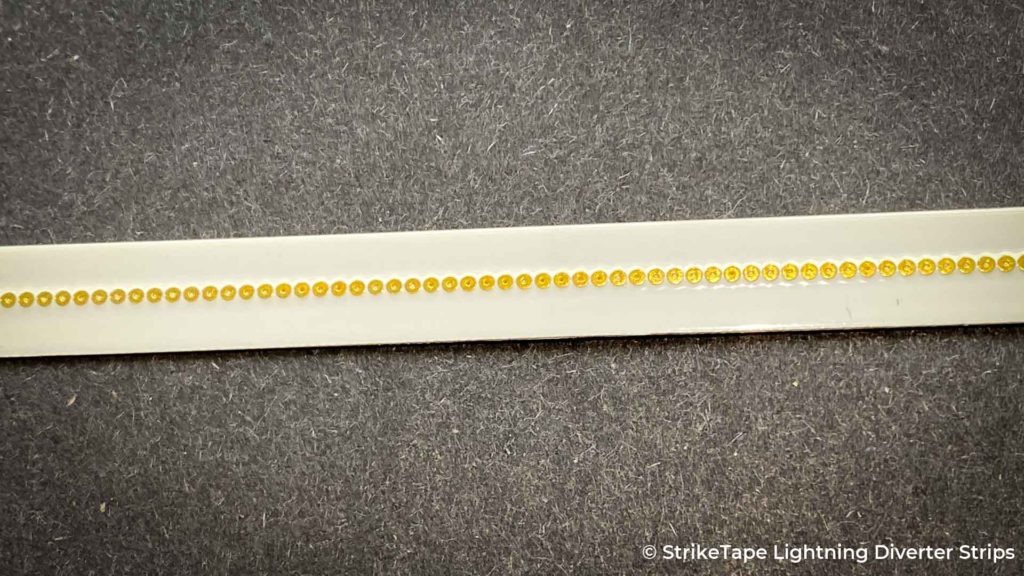
So it’s uncoupled analysis, [00:22:00] but they have no done fully coupled analysis accurately. Um, and then let’s go one step further on 10 NRA them with buttons strips with diverter strips, another level of complexity. So, um, yeah, so antenna in a context device in a context,
Dan: and that probably poses more problems, right.
Because if you’re just touching, testing each individual component, You don’t really know how they interact with each other. Right. Is that, is that right Allen?
Allen Hall: Yeah. Yeah. It doesn’t work together. You need to see the actual, like an antenna installed on an aircraft. It does very little good to figure what the pattern of an antenna is.
We all, especially a lot of aircraft, antennas are pretty simple, but the problem is once you install it on the aircraft, all the fields start bouncing around and the pattern starts to change dramatically in some cases. So it’s very hard to predict that. And I know we had a lot of. Problems when I worked at Beech aircraft with just that particular problem.
But secondarily, as we on the, in the antenna world, we’re going up in frequency. [00:23:00] So we’ve gone from sort of VHF hundred megahertz kind of things to now Ka band satellite communication, which is 30 gigahertz. So things have gotten smaller and it’s very hard to measure to, to computationally represent smaller articles on big aircraft.
Accurately. And that’s where the software that Nottingham has developed comes into play small objects on bigger platforms. Can you talk about how you take that small object and integrate onto a bigger aircraft? Like how does that mesh out? Like if I had a, an antenna on a wing, for example, how do you mesh that out?
Whether you can get a good representation of how then attend is going to perform
Dr. Ana Vukovic: I’m 10. I know that’s a good example. Um, so. Obviously that will be a large problem. So if we capture wing is how many alanine meters, you know, three, four meters, maybe more, and Canada is quite small. Um, we looked at an example of three [00:24:00] gig and 10 operating a three gigahertz.
Um, so let’s just three gigahertz in terms of wavelength. Let’s say that’s the way we want. Um, uh, labeling for three gigahertz is around 10 centimeters. So that, that means we should mesh it with one centimeter accuracy. However, antenna is much smaller than one centimeter, smaller details. And again, um, the CFC skin is much smaller and is layered structural joint on the wing.
And so, so. We combined again, we combined the two heat mesh for small regions and cubic match for large regions where we have nothing, um, nothing of interest uniform region. Um, and we ended up with that hybrid grid. Um, any realistic problem. Um, we’ll introduce very, very small cells. Um, uh, in context of time, time, domain methods, small cells mean small time stuff.
[00:25:00] And if times the be small, uh, that, that means longer, much, much longer simulation is required, but any realistic problem, bill. Probably cause you to have zero times so small that you can also say to zero. So this is where, um, we made a significant breakthrough. We, um, you know, uh, solver, we are solving, we combined all these small cells that are produced by the Mesher into a bigger cluster.
And we process these clusters. Separately as big entities, uh, that enables us to, uh, raise the timestamp by order of magnitude. So that is significant savings.
Dan: Yeah, it is.
Allen Hall: Yeah, it is. Yeah. Well, if you think about it, Dan, I think about some of the problems we’ve been involved with, like with our strike tape product, like on wind turbines, some of these winter and blades are hundred meter, long blades, and yet the lightning protection on some of these things are little receptors that may be three centimeters [00:26:00] diameter, or put our strike tape product on, which is.
Also pretty small electrically and this bigger, huge model, the only way you’re going to do that is do what the Nottingham group has done, which is try to break that problem down a little bit and then deal with the details separately from the larger object. So that computational, you can even do it because Nottingham and Ana, you can describe what is the computational power at Nottingham to do some of these problems?
How big is the set of computers?
Dr. Ana Vukovic: All our programs. So we use parallel computing and we use a moderate size cluster of 10 nodes, 320 rum. All nodes are InfiniBox connected, which means it’s fast communication between nodes. So that is a moderate size cluster. Uh, but some of our, uh, sort of customers have much, much bigger clusters.
Computational model.
Allen Hall: So when you say, how, what physical size are we talking about? Because a lot of times, when in previous, not that many years ago, we were [00:27:00] talking about using sort of Cray supercomputers to do some of these computational things now in which took up rooms. And now we’re talking about computers that sit in a closet.
Is that the kind of size we’re talking about?
Dr. Ana Vukovic: No computer sits in a closet of one and a half by one and a half meter. Um, it’s not very tall. It’s maybe half a meter tall, but it needs lots of, um, it needs, um, it gets really hot. So it needs all there.
Allen Hall: Yeah.
Dan: Is it, is it water, water cooled or air cooled? So out of curiosity,
Dr. Ana Vukovic: a.
Dan: I think the, the water cool or not, it’s not necessarily water, but well, sometimes it’s water, but I find it fascinating. The liquid cooled computers. I mean, sometimes they like this. It’s not a water, but it’s a liquid, like almost it’s just bathed in it. They just think it’s really fascinating. Just the way they, they get the handle, some of this processing power.
Um, so
Allen Hall: that’s how you can increase the speed. Yeah. It’s cool to keep it. Cool. Yeah.
Dan: Yeah. So tell me a little bit about your team. So obviously this [00:28:00] is, this sounds just like a tremendous amount of work to get where you guys, you all have gotten. Um, how do you and Trevor and Phil interact, what are the different skill sets that you have?
I mean, I’m sure you all have your unique role in this, in this system.
Dr. Ana Vukovic: So, yeah. So Phil is, um, expert person for meshing and solving for computational aspects of the methods. Uh, Trevor is. Really four terahertz applications of OHI fleet applications. So he’s looking into that area and I’m sort of looking more at microwave and electromagnetic compatibility, uh, applications.
Um, we have a range of students who look at different ASP. Okay. Um, so at the moment we have, um, uh, PhD student , who is looking at multiphysics, coupling, ultra electromagnetic coupling with thermal. A modal. So we have electromagnetic Thermo Mmm. For example, application enlightening applications. Mmm. So, uh, in the past we [00:29:00] had a student who looked up coupling between wires.
So we are capable to develop different types of, um, wiring structures, uh, classical wires and caught cell, but also, um, um, cable bundles, um, and look at the company. Um, into those, but really, um, so the wild application range is, uh, ranging between, um, low frequency, uh, chromatic compatibility to head stage.
And at the moment we are looking at, um, some spinal antennas.
Allen Hall: Oh, wow. Okay. So where, where a lot of your customers from there, they from, cause Nottingham’s in the United Kingdom. If it didn’t say that already, but where are your or they tend to be from the European countries surrounding the UK or is it from the United States or.
Dr. Ana Vukovic: Sure we collaborate with, um, predominantly VT, UK customers.
Um, [00:30:00] they are space companies, um, telecommunications companies.
Dan: And so why, obviously we talked about calm soul a little bit. But, you know, like your computer node in your cluster, you said is pretty significant and some companies have this, some, some don’t, uh, I guess what’s the advantage. Cause you know, some of these aerospace companies have tremendous financial resources, but yet it seems like it’s often easier for them to just go to you and outsource this, you know, get you guys as a consultant or contractor to do some of the computational work.
Uh, why is it so difficult for them to do some of this stuff in house?
Dr. Ana Vukovic: So I think the main difficulty is, um, um, really Cod cut file. The clean cut. So many composition companies spend lots of time and effort cleaning that. Cut. Uh, so I’ll always, um, we can reproduce [00:31:00] it. So we can introduce the card and save there.
Um, the other thing is meshing, so meshing capability to create that sort of efficient mesh. Um, and as you say, big companies already have part of computing. So once they have geometry and mesh and so they, they can easily just run the whole problem on their large cluster. And this is in fact that was the scenario without company.
Um, they just. Created everything and then run the problem on that cluster because it was so big and small for that problem, but it was possible to Waldo.
Dan: Gotcha. So if you’re, you know, say I was a new aerospace company, I want to recruit you to test a radon that we’re manufacturing. What does the process look like?
What’s the first thing that you need from me to get that process going?
Dr. Ana Vukovic: So the first thing is, um, uh, the CAD file geometry file. Um, if you can generate, uh, if it’s clean, we can read it and we can then mesh it and simulate.
[00:32:00] Dan: What is, can you, can you go into a little bit about clean versus not clean? So
Dr. Ana Vukovic: cleaning is, uh, identifying where the tiny gaps are and then manually moving the dots in the file.
So they exactly overlap. So all our files, all our, all our CAD files of working with mathematical precision. So it has to be really sort of exactly. So all the surfaces have to be unique. So if, if two bodies share surface, that surface is unique to both bodies. There isn’t a gap in between them. So, um, so that is process of cleaning the cat.
Alternatively, uh, we can, um, create our own geometry. So knowing all of them mentions in how the structure looks, we can use our own geometry generator to recreate the CAD file.
Dan: Gotcha.
Dr. Ana Vukovic: Yeah, but we do not, we do not offer services or cleaning the cards. We can, we can locate [00:33:00] the areas, but we don’t. Middle class.
There are specialist companies who actually do that business and develop software for cleaning the card.
Allen Hall: Yeah. And Dan, you know, one of the things, uh, somebody cleaning the CAD, uh, comes up as, remember that there’s a lot of, and we’ve been talking about this in the podcast. For the last several weeks, which is there’s a lot of these sort of smaller to mid companies that are popping up that are in the electric, vertical, takeoff, and landing, like the Uber in the, in the Lilium.
And there’s a number of companies like that, that just don’t have. Necessarily the time or the staff to devote, to, uh, making sure that the antenna is working. And I was just looking at Lilium here again this morning, realizing it’s a little electric, vertical takeoff and landing aircraft, and they have roughly a half a billion dollars of funding.
But if you look at the aircraft, there’s no antennas on it. Like, like it doesn’t have the ability to really [00:34:00] communicate into the airspace in which is going to be operating. And so they’re going to be doing a lot of, uh, computational things to one. They’re going to have to bury the antennas in the surface of the aircraft somehow, because they need the aerodynamic shapes to be right, to get the performance they want.
So I’m going to be doing a lot of electromagnetic things going forward. But they probably don’t have the staff, so they need to be reaching out to Nottingham and to Ana to do some of these things, just to save them time on their program. And that, that is clear. They just don’t have, you just don’t need to have a dedicated person on staff to do some of these things not today.
Dan: Yeah. Well, it sounds like it’s something that would just also take a lot of training. Like this isn’t just like a, a recent college grad that they can grab to do this job. It sounds like it’s pretty significant. And then to find someone. It’s either, you know, come on as a consultant or to hire full time, probably an unrealistic thing for a startup.
Allen Hall: Yeah. And for a lot of startups, there’s a couple of options that you can choose from the, you know, the first thing that comes a lot of [00:35:00] companies, minds, especially the smaller midsize companies as well, just buy calm, saw, well, Half training a person to be the person that we’re going to call the COMSOL person.
And they’re going to do that. And they’re going to make mechanical drawings. And the other half of the day that never really turns all that well, either they become trained enough in comps or that they find a job that they do comps all the time. Or they’re not very good at console and the results that get out of it.
Aren’t very good versus actually basically subcontracting it out to someone who knows what they’re doing and get you to the answer faster. That’s where a lot of these small to midsize companies have gone because the results are better. The outcomes are faster and the cost is less right. So there’s a huge benefit to, to employing someone like Nottingham, uh, to do these problems for you, because you just don’t have time.
If you’re trying to develop an airplane to do this,
Dan: everything’s ready to go. What’s the turnaround time. I mean, what can I expect? You know, how does this shorten my, again, my cycle and like the. Part [00:36:00] creation.
Dr. Ana Vukovic: It really depends on the problem for smaller problems can take, we can get results in a day and then they can do it this week.
Depends on what parameters the customer wants to look at. Uh, how much investigation is there, but for smaller problems, building geometry, meshing and simulating is not an issue for much larger, um, geometries. Obviously we need to accurately represent geometry. Uh, and even, uh, if, if, so it depends, it depends on what the partner the customer wants.
If it’s about understanding of performance, we may get rid of fine details. Look at the overall structure. And then, uh, later add more and more details to look at the overall effect. So. Yeah. So simulation time can be from half an hour, an hour, two days, a couple of days, depending on the size of the problem.
It’s really, [00:37:00] it’s difficult to say how much.
Dan: Yeah. But even then it sounds like, I mean, this is, this is days versus. Alan what’s what’s it take months
Allen Hall: easily, easily months easily. My, so I’ll give you a very simple example. When we were going to check the antenna pattern of a VHF comm, which is the oldest Santana known to aircraft, uh, that’s gonna run you several days to do it.
Uh, and you’re gonna spend a bunch of time burning fuel in an aircraft. You’re actually flying the airplane to, to get the patterns out of it. You’re gonna evolve. Four or five or six people to do that versus computationally. You can do it probably less than a day. You’re going to get a better answer. If you have more accuracy in the answer and you gonna to know more about what the performance, so it’s not even close, you really can’t even compare the two because computational wins.
It’s not, it’s not a competition at that point. It is computational. Electromagnetics is the answer for those kinds of problems.
Dan: So on, uh, uh, you know, it sounds like this is gonna be a really attractive [00:38:00] option for a lot of companies. How can they get in touch with you? How can they find you and your colleagues and your work at at Nottingham
Dr. Ana Vukovic: best way is by email.
We also have a website – George Green Institute for Electromagnetic Research.
Dan: Okay. And obviously we’ll put all those, uh, her contact and the, the email links and all that stuff in the show notes in the description.
So. Um, be really easy. You can just click through. So if you’re listening in iTunes or Spotify, just click the details, the show notes, and you’ll find links to get in touch with, with Anna. So yeah, I mean, that sounds like a fascinating technology you guys have developed and sound like. It really solves a lot of problems for, for bigger companies where they can just get some of these answers quickly.
And I’m sure a lot more cost effectively than. Like we said, building parts and going out and testing them in the field. All right. Well, that’ll do it for today’s episode of struck. [00:39:00] If you’re new to the show. Thank you so much for listening. And please leave a review and subscribe on iTunes, Spotify, or wherever you listen to podcasts.

